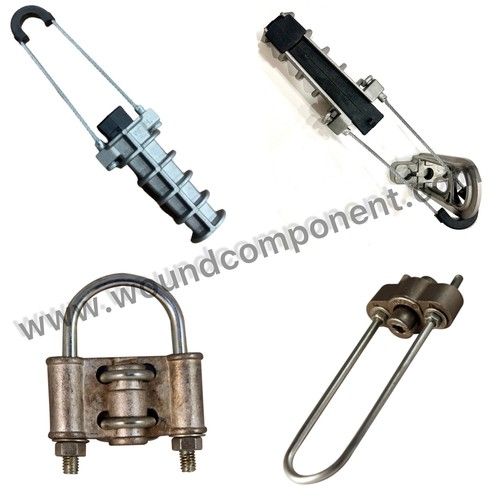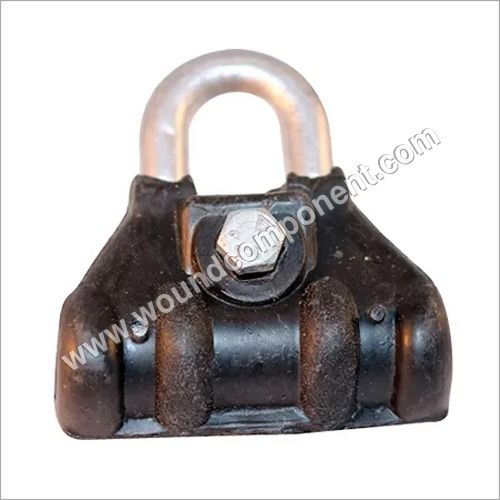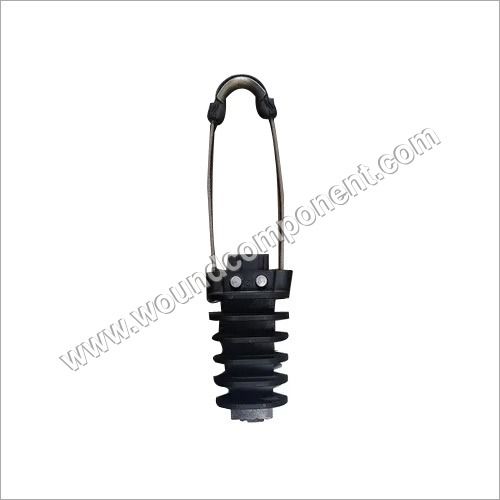
Dead End Clamp
50 INR/Piece
Product Details:
- Product Type Dead End Clamp
- Material Aluminum Alloy & UV Resistant Glass Filled Nylon
- Application Hanging AB Cable
- Standard NFC Standard
- Shape Wedge Type
- Design As per NFC Standard
- Color Silver & Black
- Click to view more
X
Dead End Clamp Price And Quantity
- 500 Piece
- 50 INR/Piece
Dead End Clamp Product Specifications
- As per NFC Standard
- Aluminum Alloy & UV Resistant Glass Filled Nylon
- NFC Standard
- Dead End Clamp
- Wedge Type
- Hanging AB Cable
- Silver & Black
Dead End Clamp Trade Information
- Letter of Credit (L/C) Cash Against Delivery (CAD) Cash Advance (CA) Telegraphic Transfer (T/T) Delivery Point (DP) Letter of Credit at Sight (Sight L/C) Days after Acceptance (DA) Cash in Advance (CID)
- 200 Piece Per Day
- 5 Days
- Yes
- Free samples available with shipping and taxes paid by the buyer
- Gunny Bags/Corrugated Box
- Australia North America South America Eastern Europe Western Europe Middle East Africa Central America Asia
- All India
- Relevant Type Test Certificates available.
Product Description
A dead end clamp, also known as an anchor clamp, is a device used to secure the end of a conductor or cable to a pole, tower, or other supporting structure. It is typically used in electrical power transmission and distribution systems, as well as in telecommunications and other industries.
The dead end clamp consists of a metal bracket that attaches to the supporting structure and a set of jaws that grip the conductor or cable. The jaws are usually made of aluminum or steel and are designed to securely hold the conductor or cable in place.
Dead end clamps are available in a variety of sizes and designs to accommodate different conductor and cable sizes and types, as well as different mounting configurations. They are an important component in ensuring the safe and reliable operation of power and communication systems, as they prevent the conductor or cable from becoming detached or damaged due to wind, vibration, or other environmental factors.
Dead End Clamp Features:
Material: It is typically made of high-strength aluminum or steel to withstand the mechanical and environmental stresses of the application.
Design: It is designed to fit specific conductor and cable sizes and types, as well as specific mounting configurations, such as pole-mounted or tower-mounted.
Grip strength: The jaws of clamps are designed to provide a secure grip on the conductor or cable to prevent slippage or detachment under mechanical or environmental stress.
Corrosion resistance: It is often coated or treated to resist corrosion and prolong their service life in harsh outdoor environments.
Installation: It may be designed for easy installation, with features such as pre-assembled hardware or tool-free installation.
Safety: It may be designed with safety features such as insulating materials or safety hooks to prevent accidental contact with live electrical components.
Load capacity: It is typically rated for specific load capacities based on the conductor or cable size and the mounting configuration.
Dead End Clamp Applications:
Power transmission and distribution: It is commonly used in power transmission and distribution systems to secure overhead power lines to poles, towers, or other supporting structures.
Telecommunications: It is also used in telecommunications systems to secure fiber optic cables or copper cables to poles or towers.
Railway electrification: It is used in railway electrification systems to secure overhead power lines to the catenary wires that supply power to trains.
Construction: It may be used in construction to secure temporary or permanent electrical wiring to supporting structures such as scaffolding or beams.
Outdoor lighting: It is used to secure outdoor lighting fixtures to poles or other structures.
Guying: It may also be used for guying, which is the process of securing a pole or tower to the ground to prevent it from toppling over due to wind or other forces.
We supply Suspension Clamps to various cities including Mumbai, Pune, Bangalore, Jaipur, Kanpur, Lucknow, Noida, Patna, Ranchi, Hyderabad, Imphal, Guwahati, Kolkata, Assam, Itanagar, Gangtok, Jammu, Kashmir, Srinagar, etc. We also export to several countries including Tanzania, DR Congo, DPR Congo, Uganda, Kenya, Sri Lanka, Nepal, Bangladesh, Vietnam, Cambodia, Myanmar, etc.
Frequently Asked Questions:
Q: What materials are dead end clamps made of?
A: These are typically made of high-strength aluminum or steel to withstand mechanical and environmental stresses.
Q: What are the different types of dead end clamps?
A: These clamps are available in different designs to fit specific conductor or cable sizes and types, and specific mounting configurations such as pole-mounted or tower-mounted.
Q: What load capacity should a dead end clamp have?
A: The load capacity of a dead end clamp depends on the conductor or cable size and type, and the mounting configuration. It is important to choose a clamp with a load capacity that is appropriate for the application.
Q: How is dead end clamp installed?
A: It is typically installed by attaching the metal bracket to the supporting structure and then tightening the jaws around the conductor or cable using bolts or other hardware.
Q: Are dead end clamps safe?
A: These can be safe if installed properly and used in accordance with industry standards and guidelines. They may be designed with safety features such as insulating materials or safety hooks to prevent accidental contact with live electrical components.
Q: Where are dead end clamps used?
A: These are used in various industries such as power transmission and distribution, telecommunications, railway electrification, construction, outdoor lighting, and guying.
Q: How do I choose the right dead end clamp for my application?
A: It is important to choose a dead end clamp that is compatible with the conductor or cable size and type, the mounting configuration, and the load capacity requirements of the application. Consulting with a qualified professional or manufacturer can help ensure the proper selection and installation of a dead end clamp.
Tell us about your requirement

Price:
Quantity
Select Unit
- 50
- 100
- 200
- 250
- 500
- 1000+
Additional detail
Mobile number
Email






 Call Me Free
Call Me Free
 English
English Spanish
Spanish French
French German
German Italian
Italian Chinese (Simplified)
Chinese (Simplified) Japanese
Japanese Korean
Korean Arabic
Arabic Portuguese
Portuguese